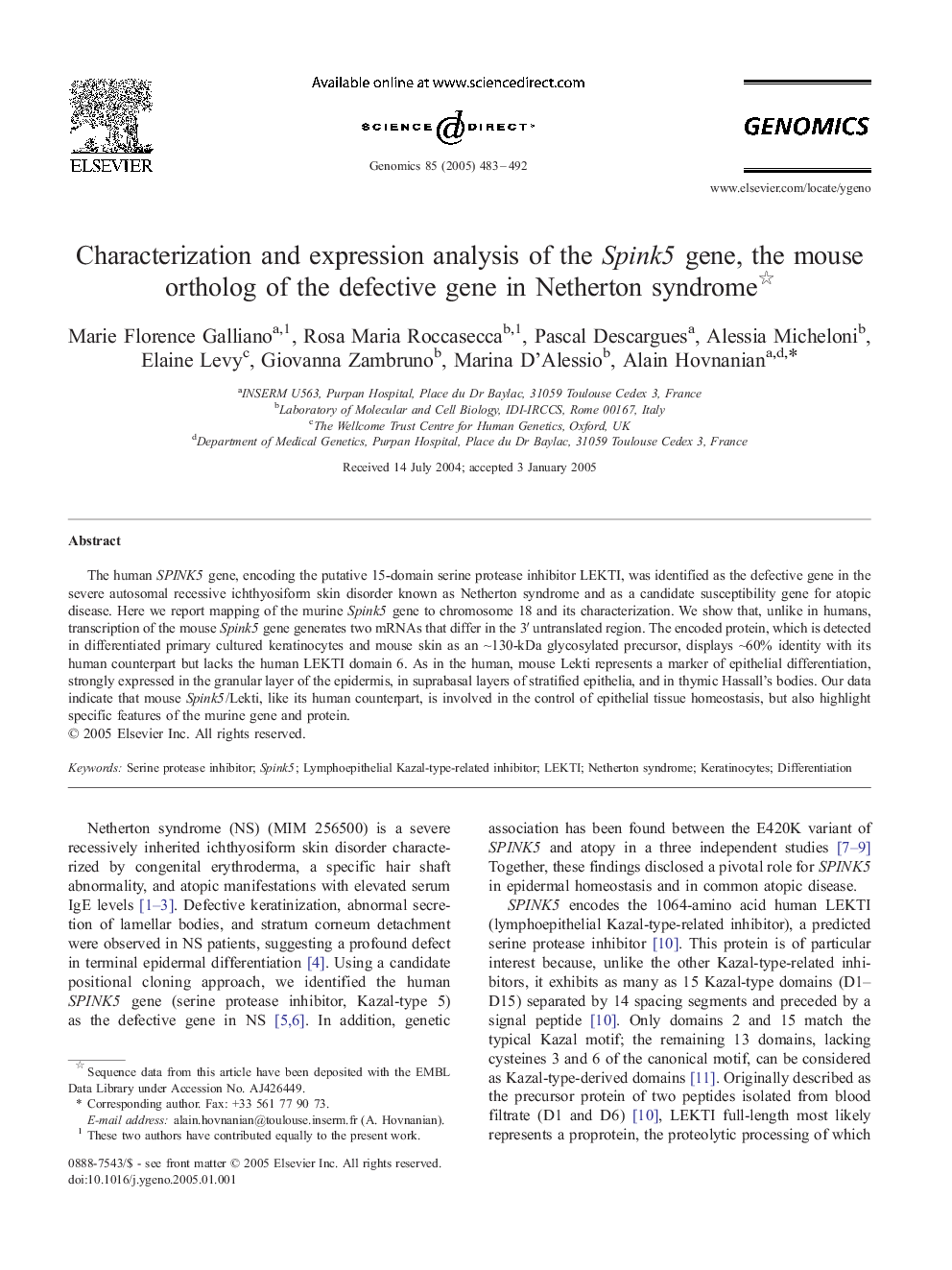| Article ID | Journal | Published Year | Pages | File Type |
|---|---|---|---|---|
| 9131978 | Genomics | 2005 | 10 Pages |
Abstract
The human SPINK5 gene, encoding the putative 15-domain serine protease inhibitor LEKTI, was identified as the defective gene in the severe autosomal recessive ichthyosiform skin disorder known as Netherton syndrome and as a candidate susceptibility gene for atopic disease. Here we report mapping of the murine Spink5 gene to chromosome 18 and its characterization. We show that, unlike in humans, transcription of the mouse Spink5 gene generates two mRNAs that differ in the 3â² untranslated region. The encoded protein, which is detected in differentiated primary cultured keratinocytes and mouse skin as an â¼130-kDa glycosylated precursor, displays â¼60% identity with its human counterpart but lacks the human LEKTI domain 6. As in the human, mouse Lekti represents a marker of epithelial differentiation, strongly expressed in the granular layer of the epidermis, in suprabasal layers of stratified epithelia, and in thymic Hassall's bodies. Our data indicate that mouse Spink5/Lekti, like its human counterpart, is involved in the control of epithelial tissue homeostasis, but also highlight specific features of the murine gene and protein.
Related Topics
Life Sciences
Biochemistry, Genetics and Molecular Biology
Genetics
Authors
Marie Florence Galliano, Rosa Maria Roccasecca, Pascal Descargues, Alessia Micheloni, Elaine Levy, Giovanna Zambruno, Marina D'Alessio, Alain Hovnanian,
